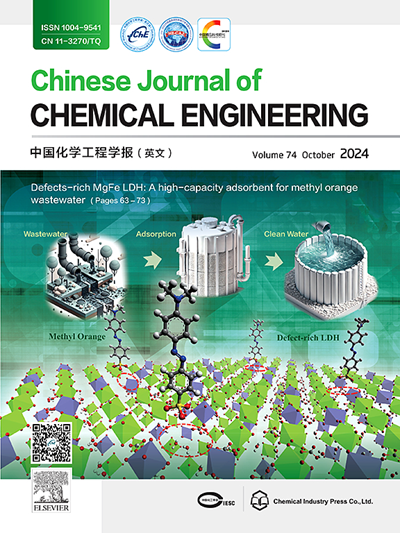Hybrid modelling incorporating reaction and mechanistic data for accelerating the development of isooctanol oxidation
IF 3.7
3区 工程技术
Q2 ENGINEERING, CHEMICAL
引用次数: 0
Abstract
Alcohol oxidation is a widely used green chemical reaction. The reaction process produces flammable and explosive hydrogen, so the design of the reactor must meet stringent safety requirements. Based on the limited experimental data, utilizing the traditional numerical method of computational fluid dynamics (CFD) to simulate the gas-liquid two-phase flow reactor can mitigate the risk of danger under varying working conditions. However, the calculation process is highly time-consuming. Therefore, by integrating process simulation, computational fluid dynamics, and deep learning technologies, an intelligent hybrid chemical model based on machine learning was proposed to expedite CFD calculations, enhance the prediction of flow fields, conversion rates, and concentrations inside the reactor, and offer insights for designing and optimizing the reactor for the alcohol oxidation system. The results show that the hybrid model based on the long and short-term memory neural network achieves 99.8% accuracy in conversion rate prediction and 99.9% accuracy in product concentration prediction. Through validation, the hybrid model is accelerated by about 360 times compared with instrumental analysis in conversion rate prediction and about 45 times compared with CFD calculation in concentration distribution prediction. This hybrid model can quickly predict the conversion rate and product concentration distribution in the gas-liquid two-phase flow reactor and provide a model reference for fast prediction and accurate control in the actual chemical production process.
结合反应和机理数据的混合模型,加速异辛醇氧化的发展
醇氧化是一种应用广泛的绿色化学反应。反应过程中产生易燃易爆的氢气,因此反应器的设计必须满足严格的安全要求。在实验数据有限的情况下,利用传统的计算流体力学(CFD)数值方法对气液两相流反应器进行模拟,可以降低不同工况下的危险风险。然而,计算过程非常耗时。因此,通过整合过程模拟、计算流体力学和深度学习技术,提出了一种基于机器学习的智能混合化学模型,以加快CFD计算,增强对反应器内流场、转化率和浓度的预测,并为醇氧化系统反应器的设计和优化提供见解。结果表明,基于长短期记忆神经网络的混合模型对转化率的预测准确率达到99.8%,对产物浓度的预测准确率达到99.9%。通过验证,混合模型在转化率预测上比仪器分析快360倍左右,在浓度分布预测上比CFD计算快45倍左右。该混合模型可以快速预测气液两相流反应器内的转化率和产物浓度分布,为实际化工生产过程的快速预测和精确控制提供模型参考。
本文章由计算机程序翻译,如有差异,请以英文原文为准。
求助全文
约1分钟内获得全文
求助全文
来源期刊

Chinese Journal of Chemical Engineering
工程技术-工程:化工
CiteScore
6.60
自引率
5.30%
发文量
4309
审稿时长
31 days
期刊介绍:
The Chinese Journal of Chemical Engineering (Monthly, started in 1982) is the official journal of the Chemical Industry and Engineering Society of China and published by the Chemical Industry Press Co. Ltd. The aim of the journal is to develop the international exchange of scientific and technical information in the field of chemical engineering. It publishes original research papers that cover the major advancements and achievements in chemical engineering in China as well as some articles from overseas contributors.
The topics of journal include chemical engineering, chemical technology, biochemical engineering, energy and environmental engineering and other relevant fields. Papers are published on the basis of their relevance to theoretical research, practical application or potential uses in the industry as Research Papers, Communications, Reviews and Perspectives. Prominent domestic and overseas chemical experts and scholars have been invited to form an International Advisory Board and the Editorial Committee. It enjoys recognition among Chinese academia and industry as a reliable source of information of what is going on in chemical engineering research, both domestic and abroad.
 求助内容:
求助内容: 应助结果提醒方式:
应助结果提醒方式:


